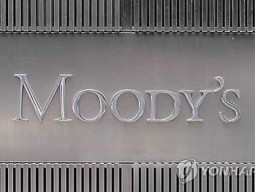
LAHORE:
Moody’s recent upgrade for Pakistan’s dollar bonds rating one notch from stable to positive along with a rate cut in the monetary policy may paint a rosy picture, but Institute Policy Reforms (IPR) begs to differ.
According to IPR, led by former finance minister Dr Hafeez Pasha, the monetary policy takes an overly optimistic view of government’s economic performance. It fails to refer to the problems, which will hinder economic performance in months to come. As an autonomous institution, it is expected that SBP would take notice of these happenings
The monetary policy estimates that growth rate will exceed fiscal year (FY) 2014 outcome of 4.1%. It is not clear how this growth rate will be achieved as in the first seven months, large scale manufacturing has shown sluggish growth while the agricultural sector has been hit by floods (albeit less than originally anticipated). According to IPR, it will be surprising if the agricultural sector registers a growth rate of more than 3% in 2014-15
Inflation has come down from 8.2% in June 2014 to 3.2 % in February 2015. IPR notes, however, that this is mostly because of the precipitous decline in international oil prices. IPR states that inflation rate will rise in the next few months since international oil price has risen 20% in February, and because of higher gas prices accompanied by high procurement price of wheat.
The policy fails to highlight the high level of government borrowings from commercial banks in FY15, which has led to a ‘crowding out’ of credit to the private sector. The retirement of commodity financing is slow at Rs55 billion as compared to Rs133 billion last year. Export of wheat was not possible, despite subsidy, because of its low price in the international market.
The MPS praises the government for restricting the fiscal deficit to 2.2% of the GDP, in the first half of 2014-15. The reason for this is the limits on expenditure. There is negative growth in expenditure of debt servicing and releases for PSDP are only 24% of the annual target in the first six months. IPR estimates that the fiscal deficit in the first eight months has jumped to 3.7% of the GDP. It seems likely that the deficit will exceed 4.9% of the GDP in 2014-15. FBR will fall short by almost Rs200 billion in meeting the annual target. Moreover, on March 6, 2015, the cash surplus of the four provincial governments combined is only Rs77 billion, well below the budgeted amount.
The MPS highlights the decline in the current account deficit in the first eight months of 2014-15. The decline in exports has been more than compensated by the buoyancy of home remittances, fall in imports, large CSF payment, and other inflows like the Ijara-Sukuk bond flotation and releases from the IMF.
FDI has stopped growing. Net external concessional assistance from traditional donors, too, has decreased. Therefore, the financial account of the balance of payments has become more vulnerable. Finally, the rupee has risen in value with respect to euro. Can Pakistan retain its competitiveness in the EU, despite the presence of GSP Plus scheme?
The SBP will need to explain its exchange rate policy, it says.
Published in The Express Tribune, March 28th, 2015.
Like Business on Facebook, follow @TribuneBiz on Twitter to stay informed and join in the conversation.


































































COMMENTS
Comments are moderated and generally will be posted if they are on-topic and not abusive.
For more information, please see our Comments FAQ